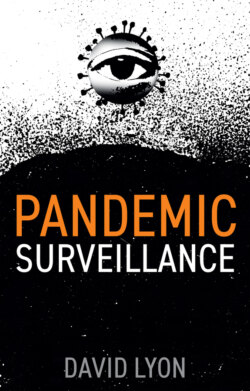Читать книгу Pandemic Surveillance - David Lyon - Страница 10
Pandemic and tech-solutionism
ОглавлениеAlmost all the proposed ways of dealing with the pandemic address only the symptoms, not the causes. They are Band-Aids, intended to contain and control the virus. At the time of writing, the original causes are not known to science, so the Band-Aid approach is understandable. Knowledge gleaned from many historical epidemics and pandemics informs how public health officials respond when new outbreaks occur. It is doubtful how much could be learned – except perhaps negatively – from the fourteenth-century Black Death, which killed huge swathes of the population around the Mediterranean. A wide variety of sometimes exotic treatments were proposed, from herbalism to blood-letting to self-flagellation, although doctors did learn to lance the bodily buboes that gave the disease its other name, “Bubonic Plague.”
But – as in the case of the nineteenth- and, especially, twentieth-century epidemics such as the “Spanish Flu” – isolation and segregation of patients, along with the search for a serum, became common patterns. They worked with what was available in their day. So today, we work with what’s available now. Keeping a physical distance – often misleadingly called “social distancing” – became commonplace, as did the need for mask-wearing and quarantine. And because ours is an era loaded with digital devices and systems – not to mention global corporations successfully selling these – data and data analysis, plus Machine Learning and Artificial Intelligence, are seen as key COVID-containing contrivances.
Thus, in the early twenty-first century, the pressures pushing “technological solutionism”15 are strong, and pandemic panic only adds further propulsion. As Rob Kitchin notes, those pressures include intense lobbying of governments by technology companies, their already-existing technocratic practices and their desire to stimulate high-tech innovation.16 This was already visible in the rush to find “solutions” after the 2001 attacks on New York and Washington known as “9/11,” when companies hastily used their home pages to offer simultaneous condolences to bereaved families and advertisements for their “anti-terrorism” products. And governments acceded, using techniques ranging from biometric tests to Artificial Intelligence to trace and impede terrorism.17
The same kind of response follows in other similar situations. It also happened, for instance, following the terrorist attacks on Mumbai – centring on the Taj Mahal Palace Hotel and the Railway Terminus – in 2008. Very quickly, both maritime security and hotel security – scanners, maritime identification systems, biometric IDs for fishermen – were enhanced with new surveillance measures, and new National Security Guard (NSG) units were deployed in major cities. These were “required” because the attack was mounted from the ocean, and due to delays with the NSG, which at the time was based only near New Delhi.18 Today, in a global pandemic, such solutionism has a seductively powerful pull.
Why the haste to set up government security agencies and massive surveillance arsenals? Part of the answer is that citizens rightly demand adequate responses to emergencies and crises, by government. But Naomi Klein notes that another factor kicks in – the “shock doctrine.”19 She shows how governments frequently take advantage of both “natural” disasters and human conflicts to bring about major changes that consolidate their power. Klein now speaks of a “pandemic shock doctrine,” clearly visible in New York Governor Andrew Cuomo’s vision for a new New York, with Google and Microsoft “permanently integrating technology into every aspect of civic life.”20 Surveillance capitalism rides again.
Now, the point is emphatically not that high-tech products have no place in pandemic responses. It is, rather, that any such responses deserve to be checked for their fitness-for-purpose and their compliance with other priorities than health, such as privacy and civil liberties. Each digital offering has strict limits on what it can achieve, and each brings with it challenges as well as benefits to human life. Beyond this, it should also be acknowledged that such products are unlikely to solve pandemic problems. Rather, they are potential contributions to a tool-box of practices that, it is hoped, will mitigate some effects of the pandemic.
“Solutions” are considered in relation to dealing with causes more properly than merely with symptoms. As the “cause” of the COVID-19 pandemic is as yet unknown, dealing with that is more than moot. However, one of the likely contributory factors relates to the fact that COVID-19, like many contemporary diseases, is zoonotic. That is, the virus jumps from animals to humans, as seems to have occurred in Wuhan. A 2020 UN conference on loss of biodiversity hinted strongly that the COVID-19 virus may be linked with – perhaps accelerated by – species depletion, itself related to, among other things, deforestation.21 It is systemic. In contrast with the rapid rollout of new platforms, devices and apps, dealing with species depletion is a long-term, massive, planetary project. One might also continue the comparison with 9/11, in that the high-tech “solutions” introduced for national security purposes also ignored the deeper problems of the cause of terrorism in 2001.
